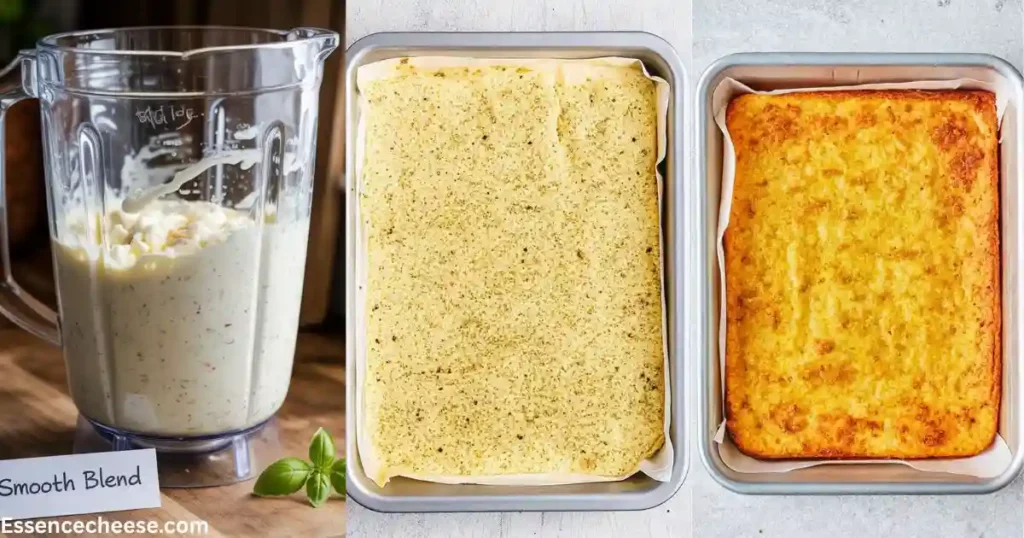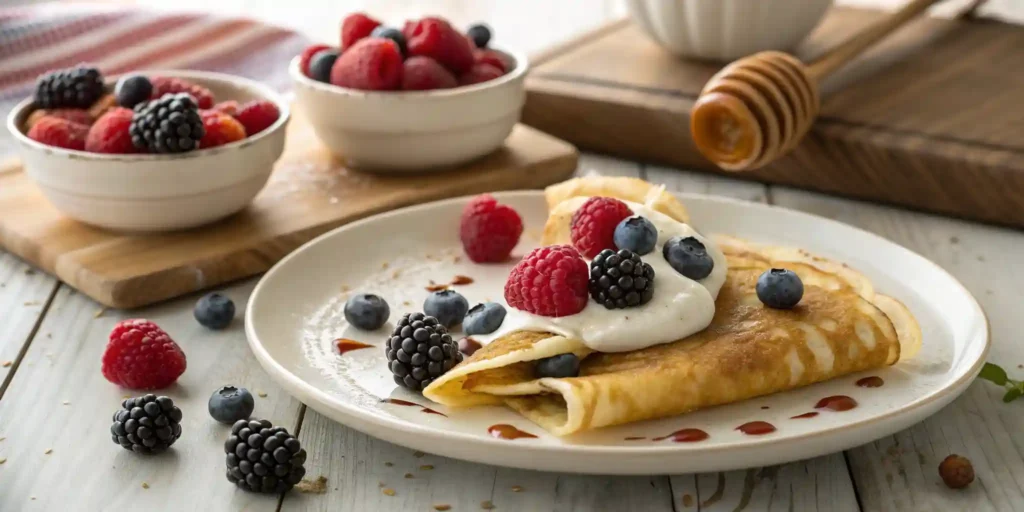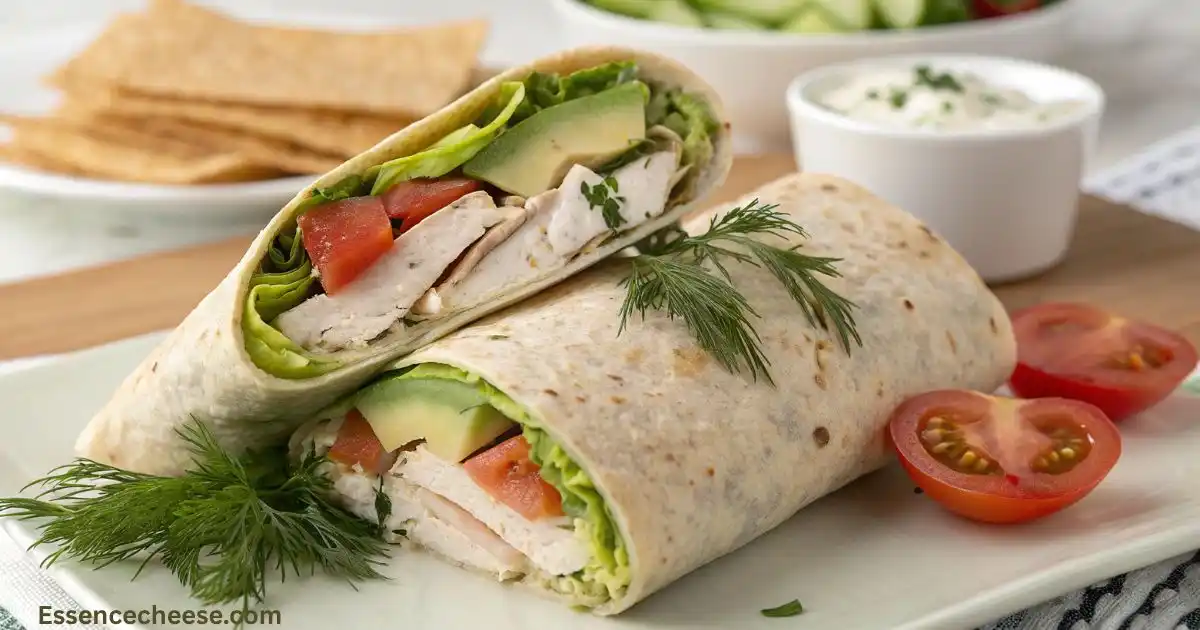Cottage Cheese Flatbread Easy Viral Recipe You Need
Introduction
Cottage cheese flatbread is the internet’s favorite new recipe, and for good reason. It is high in protein, low in carbs, and versatile enough to use as a wrap, sandwich bread, or even a pizza crust. Best of all, it comes together quickly with just a few simple ingredients and bakes to perfection with crispy edges and a soft, flexible center that will not fall apart. This recipe proves you can have a healthy option that is both satisfying and incredibly easy to make..
Table of Contents
Why This Recipe is Foolproof
The Science of the Fold
The magic lies in how cottage cheese and eggs work together. Cottage cheese provides casein protein which, when baked with egg protein, forms a strong yet flexible structure. This is what allows the flatbread to bend without breaking.
The Full-Fat Advantage
Choosing full-fat cottage cheese makes a big difference. The higher fat content adds moisture, which creates a softer and more pliable result. Low-fat versions often release extra water, which can lead to sogginess or a brittle texture.
The Blender is Non-Negotiable
Blending the mixture is essential. It transforms lumpy curds into a perfectly smooth batter. Without blending, the final product would be uneven and more like baked cheese than flatbread. A silky batter is the secret to a sturdy yet flexible wrap.
Ingredients Needed
The 2-Ingredient Base
- 1 cup cottage cheese (full-fat or 2 percent for best texture)
- 2 large eggs, at room temperature
Essential Seasonings
- 1 teaspoon garlic powder
- 1 teaspoon Italian seasoning
- Pinch of salt, optional
Optional Flavor Profiles
- For a Taco Vibe: add chili powder, cumin, and smoked paprika
- For a Mediterranean Twist: add oregano, parsley, and a drizzle of olive oil
- For an Everything Bagel Style: sprinkle everything bagel seasoning before baking
- For a Sweet Version: add a touch of vanilla, cinnamon, and a drizzle of honey after baking
How to Make Cottage Cheese Flatbread
Step 1. Preheat and Prepare
Preheat your oven to 350°F. Line a 9×13-inch baking pan with parchment paper, folding the corners neatly so the batter spreads evenly. If using a larger sheet pan, double the recipe.
Step 2. Blend the Batter
Add cottage cheese, eggs, garlic powder, Italian seasoning, and salt to a blender or food processor. Blend until completely smooth.
Pro Tip: The batter should be lump-free and resemble pancake batter in consistency.
Step 3. Spread Evenly
Pour the batter onto the prepared pan. Tilt the pan gently so it spreads into a uniform layer. For extra flavor, sprinkle more Italian seasoning on top.
Step 4. Bake
Bake for 35 to 40 minutes.
Visual Cue: The flatbread is ready when the edges are golden brown and the center springs back lightly when pressed with your fingertip.
Step 5. Cool and Cut
Let the flatbread rest for 10 to 15 minutes before slicing. This prevents tearing and gives it structure. Cut into two large wraps or smaller portions, depending on how you plan to use it.
Step 6. Serve or Store
Enjoy immediately with your favorite fillings like chicken, avocado, and veggies. Store leftovers in an airtight container with parchment paper between pieces for up to three days. Reheat in the toaster oven or air fryer for best texture.

3 Ways to Transform Your Flatbread
1. The High-Protein Sandwich Wrap
Use your flatbread as a sturdy, flexible wrap. Fill it with sliced turkey breast, avocado, crisp lettuce, juicy tomato, and a light spread of dill mayo. This combination delivers a satisfying lunch that packs protein and freshness in every bite.
2. The 10-Minute Pizza Base
Turn your flatbread into a quick and healthy pizza crust. Spread marinara sauce over the surface, sprinkle with shredded mozzarella, and layer on your favorite toppings. Place it under the broiler for 3 to 5 minutes until the cheese melts and bubbles. The edges stay crispy while the center becomes chewy and flavorful.
3. The Sweet Breakfast Crepe
For a sweet version, add half a teaspoon of cinnamon and one teaspoon of vanilla extract to the base recipe before baking. Once cooled, spread with creamy Greek yogurt, top with fresh berries, and drizzle lightly with honey. This transforms your flatbread into a game-changing high-protein breakfast that feels indulgent yet nourishing.

Flatbread also makes a fantastic base for a healthy pizza. If you want more pizza-style inspiration, check out our cottage cheese pizza crust recipe or try this easy cottage cheese pizza.”
Storage and Reheating
Keep leftover flatbread fresh by stacking the pieces with parchment paper between them and placing them in an airtight container. Store in the refrigerator for up to three days.
When you are ready to enjoy, reheat gently in a toaster oven or air fryer to bring back the crisp edges and soft, flexible center. Avoid microwaving as it can make the flatbread rubbery.
Freezing is not recommended, since the texture tends to become soggy after thawing.
Conclusion
Cottage cheese flatbread is a recipe that blends simplicity with nutrition, giving you a healthy option that tastes just as satisfying as traditional bread. With its golden edges and soft center, it works beautifully for wraps, sandwiches, or even as a quick pizza base. You get the bonus of high protein and low carbs without the heaviness of flour.
If you try this recipe, I would love to know how it turned out. Leave a star rating and a comment below to share your thoughts. You can also show off your version by tagging me on social media. What fillings or toppings did you choose for your flatbread? Share your ideas so others can be inspired too.
For precise nutritional data on cottage cheese, including protein, fat, vitamins, and more, check USDA’s FoodData Central.
Frequently Asked Questions
Why is my cottage cheese flatbread soggy?
This usually happens for two reasons. First, some brands of cottage cheese contain more liquid which can make the batter watery. Strain it through a fine mesh sieve before blending to fix this issue. Second, the bread might not have baked long enough. Always continue baking until the center feels firm and the edges turn golden.
What to eat with cottage cheese flatbread?
This flatbread is incredibly versatile. You can fill it with turkey, avocado, lettuce, and tomato for a satisfying wrap. It also works well as a quick pizza crust topped with marinara, mozzarella, and fresh herbs. For a sweeter option, pair it with Greek yogurt, fresh berries, and a drizzle of honey for breakfast or a light snack.
How long does cottage cheese flatbread last?
Keep your flatbread in an airtight container in the refrigerator for up to four days. Place parchment paper between each piece so they do not stick together. When you are ready to eat, enjoy it cold or reheat in the oven, toaster oven, or air fryer.
Is cottage cheese flatbread good for you?
Yes, it is a healthy choice. This recipe is naturally high in protein which helps keep you full and satisfied. It is low in carbs and gluten-free, making it suitable for many eating plans. A serving typically provides plenty of protein without the refined flours used in traditional bread.
Do you need to blend cottage cheese for flatbread?
Blending is essential. It smooths out the curds into a creamy batter that bakes evenly and holds together. If you skip blending, you will end up with a chunky texture rather than a flexible wrap.
What is the healthiest cottage cheese to eat?
For the best texture, full-fat cottage cheese works best because it prevents the bread from drying out. When choosing a brand, look for simple ingredients such as milk, cream, salt, and cultures. Many people prefer brands like Good Culture since they use minimal additives and often contain probiotics.

Cottage Cheese Flatbread Easy Viral Recipe You Need
Ingredients
Base
- 1 cup cottage cheese (full-fat or 2%) for best texture
- 2 large eggs room temperature
Seasonings
- 1 tsp garlic powder
- 1 tsp Italian seasoning
- 1 pinch salt optional
Instructions
- Preheat your oven to 350°F (175°C). Line a 9×13-inch baking pan with parchment paper, folding corners neatly.
- Add cottage cheese, eggs, garlic powder, Italian seasoning, and salt to a blender. Blend until completely smooth and lump-free.
- Pour the batter into the prepared pan. Tilt gently to spread into an even layer. Sprinkle extra Italian seasoning on top if desired.
- Bake for 35–40 minutes, until edges are golden brown and the center springs back when pressed.
- Let cool for 10–15 minutes before cutting into wraps or portions.
- Serve immediately with your favorite fillings, or store in an airtight container with parchment between layers for up to 3 days.
Notes
✅ For a Mediterranean twist, mix in oregano, parsley, and a drizzle of olive oil.
✅ For an everything bagel style, sprinkle seasoning before baking.
✅ For a sweet version, add vanilla, cinnamon, and top with yogurt and berries after baking. Store leftovers in the fridge for up to 3 days. Reheat in toaster oven or air fryer for best texture. Avoid microwaving. Freezing not recommended.
Have you given our recipe a try ?
There are no reviews yet. Be the first one to write one.
Last Updated on August 27, 2025 by Janelle
- Healthy Cottage Cheese Pudding Recipe (5 Minutes) - December 20, 2025
- Strawberry Crunch Cheesecake: Easy Recipe & Tips - December 6, 2025
- The Ultimate Sopapilla Cheesecake Recipe (Churro Cheesecake Bars) - November 22, 2025

